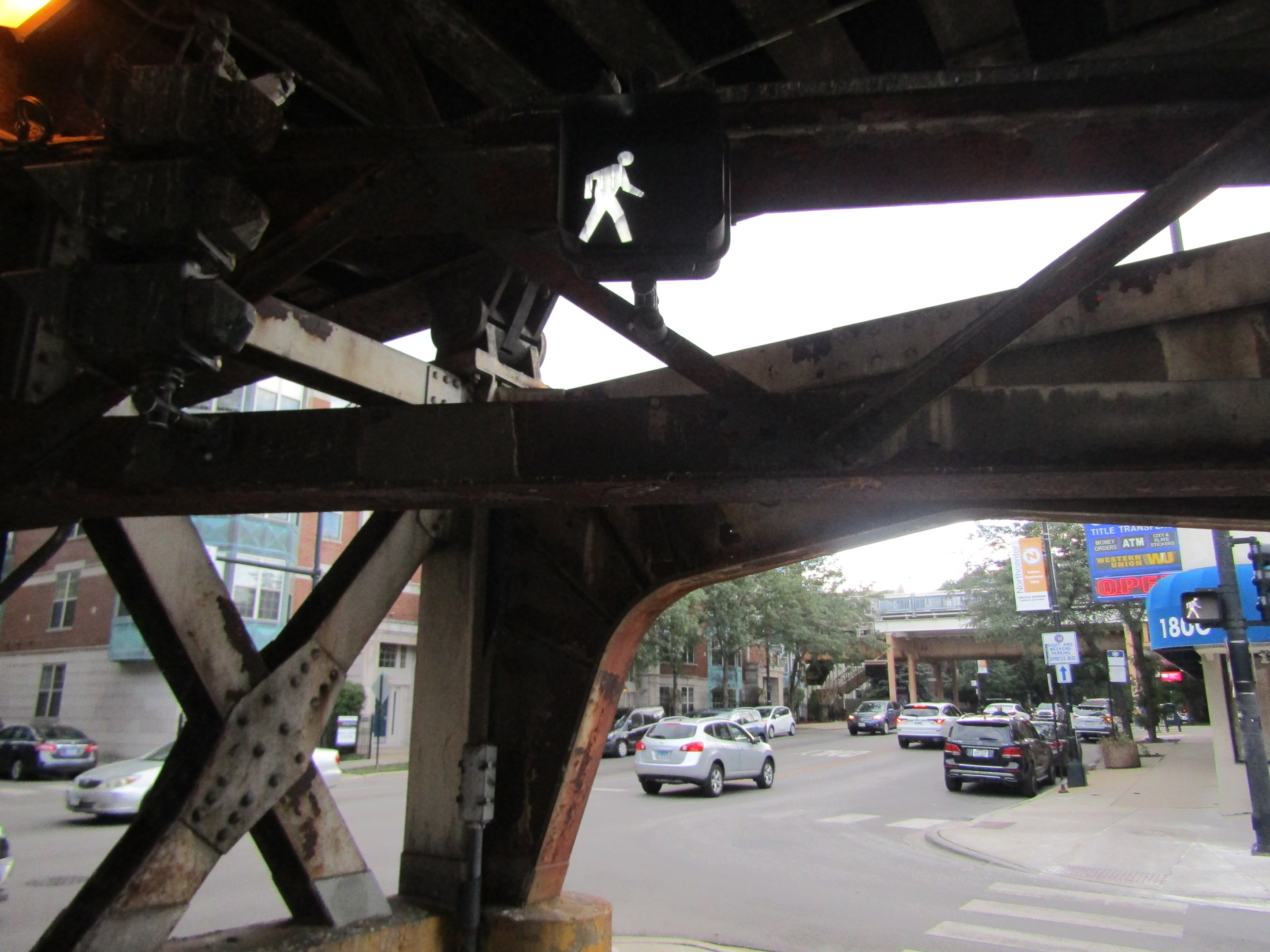Update 9/14/21, 11 AM: Metra spokesperson Michael Gillis provided the following explanation for why the railroad feels that, rather than building bridges that can accommodate possible future triple-tracking now, it makes more sense to build two-track bridges and add a third bay for the additional track in the future if necessary.
We have to keep two tracks open for service during the work. Under the proposed construction staging, during the first phase, we would build a new track along the western edge of the right of way, where there used to be a track and so there is room, and use the two existing tracks on the eastern edge and in the center for service. There is only room to build a single bay without disrupting the existing tracks. When that track is done, we take the center track out and use the new track on the western edge and the old track on the eastern edge for service. We build new bays for the second new track in the center and then lay tracks there. There is only room to build a single bay there without disrupting the existing tracks, one old, one new, that we need for service. Then use the two new bridges and tracks for service, take the remaining old track out of service and tear down the second old track bridges. It would be at this point that we would add a third track and third bays to bridges but we are not doing that now because it would greatly add to the expense of the project, not only for the third bays but for the retaining wall work on the eastern side that would be needed to support a third track on the eastern edge of the right of way. We’ll have to figure out how to fund that if and when a third track is added. But there would be no retrofitting of the first two new bays needed - we would just add a bay next to the other two.
As Metra and Union Pacific Railroad are gearing up to replace eleven 120-year-old Union Pacific North line bridges in Lincoln Park and Lakeview between Addison Street and Fullerton Avenue, nearby residents and businesses are wondering about the construction impacts, including possible flooding issues, and just how close to their homes the new tracks will be.
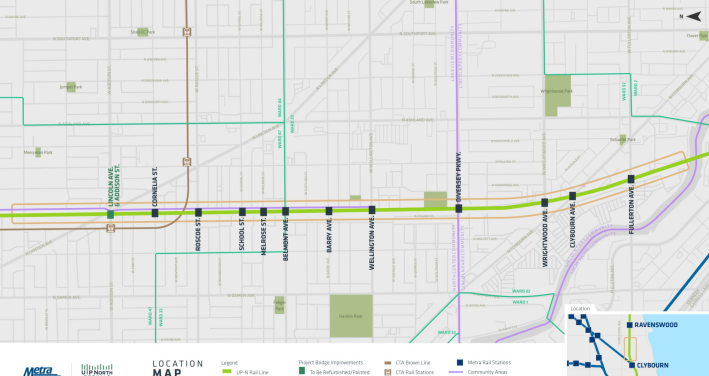
However, the residents didn’t get many answers during Metra’s September 9 virtual public meeting, the first of several planned hearings about the project. As Metra officials and consultants emphasized throughout the meeting, the details will be worked out once the railroad completes the federal environmental review and the engineering study. The design isn’t expected to be completed until the summer of 2023, with construction taking place between 2023 and 2027. But the officials are expected to share more details at the second public meeting, which will take place either toward the end of 2021 or beginning of 2022.
In the meantime, residents got a chance to look at the plans. The bridge replacements will follow a similar process as earlier bridge replacements on the section of the line in Edgewater and Uptown, between Grace Street and Balmoral Avenue. The tracks will be shifted west, and most bridges will be completely replaced, and the embankment retaining walls will be shored up.
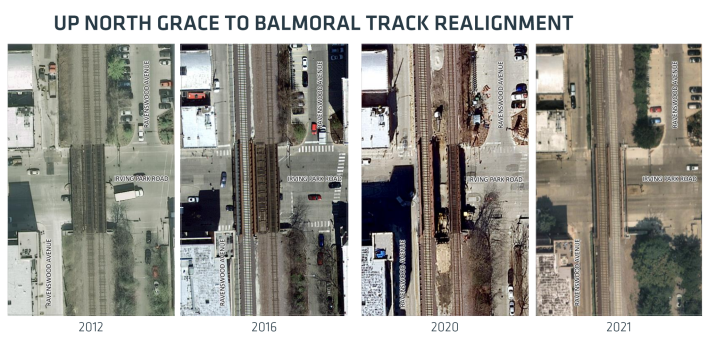
The Addison/Lincoln Bridge, which was built more recently during the Richard J. Daley administration, will simply be refurbished and repainted. The railroads will improve the viaducts, adding lighting and making the sidewalks wheelchair-accessible. The project will also lower Roscoe and Cornelia streets, which are located south and north (respectively) of the spot where the CTA Brown Line passes over the Metra tracks. This is being done to maintain current clearance under the UP North Line and the Brown Line.
While Metra officials took pains to emphasize that the new bridges wouldn’t result in more frequent train service, they argued that the project is a net win for passengers, since it will reduce maintenance costs and maintenance-related delays.
The Union Pacific North Line runs between the Ogilvie Center in the West Loop and Kenosha, Wisconsin, though most trains only go as far north as Waukegan. The rail corridor is owned by the eponymous railroad company, which operates Metra service under contract with Metra.
Metra is covering the $263.3 project costs through a combination of state and federal funds. The commuter railroad has already secured $161.2 million, including $6 million from 2019 Federal Transit Authority 5337 State of Good Repair Funds, and $156.1 million from Rebuild Illinois bond funds. Metra is still identifying the rest of the funding.
When the bridges were built, they were designed for three tracks. The Chicago and North Western Railroad, which owned the line before Union Pacific acquired the entire company, dismantled the westernmost track in the early 1980s.
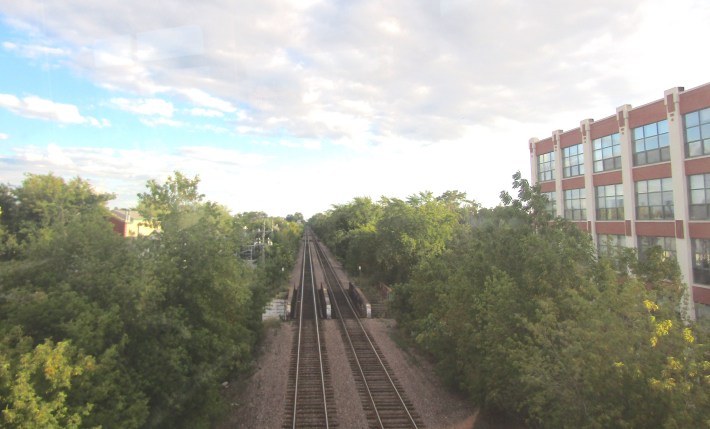
Metra and UP are planning to take advantages of this. As with the Uptown/Edgewater segment, they will rebuild the westernmost track, then rehab what is currently the west, northbound track, and then remove the easternmost track. This way, there will always be two tracks in service at any given time. Once the project is completed, the westernmost track will become the new northbound track, while the current northbound track will become a southbound track.
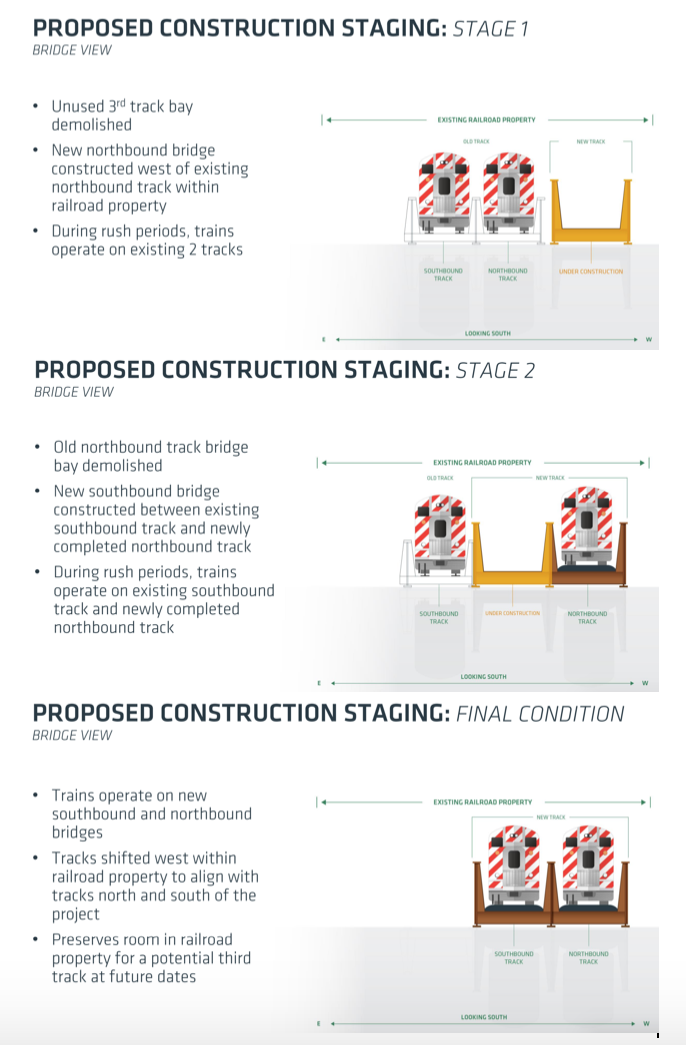
The set-up also means that, instead of replacing an entire bridge at once, each bridge will be replaced one track at the time, so there will likely be several closures per bridge. Steve Hands, the environmental consultant for the project, said this means construction crews would most likely be working on several bridges at once.
While the new bridges will only have room for two tracks, Hands indicated that Metra and UP are keeping the embankment the same width to give the railroads room to triple-track the line in the future, if they choose to. Of course, that would require widening or replacing all the bridges all over again, so this may be a case of being penny-wise and pound-foolish. After all, it's common for vehicular bridges to be built with more lanes that the roads they serve, just in case the road gets widened in the future (which is generally a bad idea for roads, whereas additional railroad tracks are often useful.)
[After publication of this piece, Metra told Streetsblog that the bridges could be widened by adding an extra bay with no need to replace the spans – see update above. However, doing so in the future would almost certainly involve more cost and disruption than doing it as part of the current project. -JG]
Hands added that replacement of the bridges will require the removal of the “Welcome to Roscoe Village” gateway sign painted on the Roscoe Street bridge. “We’re already discussing different options for different community identifiers in the area, and that's something we want to continue to work on with the [Lakeview Roscoe Village Chamber of Commerce] and the Roscoe Village Neighbors [community organization],” he said.
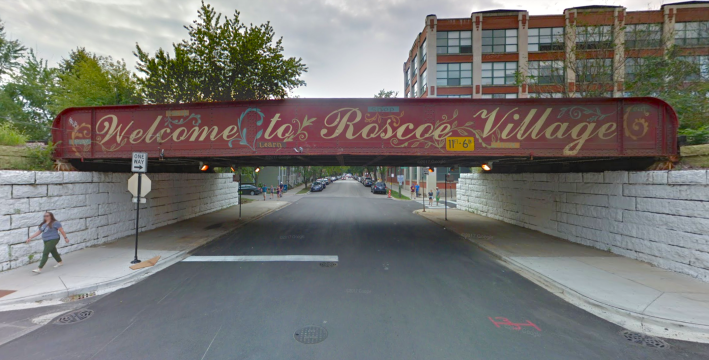
When asked about how the project will address flooding, especially on the lowered Roscoe Street and Cornelia Avenue, Hands said that the bridges will be designed with features “to make sure that the water is directed appropriately.” Kate Sullivan, Metra’s project manager, said that the two streets will be lowered “within the range of 8-12 inches.”
The consultants were also asked what will be done to ensure that truck drivers don’t hit the bridge or get stuck under it. Hands said that the bridge will feature a “sacrificial beam” of steel that the trucker would hit before striking the bridge itself. The beam could be easily replaced, and the damage would be averted.
Colin Fleming, the transportation planner at CDM Smith planning firm, said that he couldn’t go into detail about how the construction would impact the nearby properties because “we aren't in the construction phase quite yet.” He expected there to be “disruption [from] temporary street closures, detours and construction equipment.” He also mentioned construction workers possibly needing parking.
Fleming said that one of the issues is that, as condos replaced industry along the rail corridor, some property owners put up fences on or near the embankment. In many cases, the fences will need to be moved, at least temporarily, to accommodate construction. “Again, these areas will be required for the project, and we'll be coordinating with some of the properties along the corridor."
Several attendees asked just how far west the westernmost track would be built. “I'm not trying to dodge the question, [but] we're looking at a variety of distances as part of noise/vibration study,” Hands said, adding that, whatever option they go with, they'll have to stay within the existing, Union Pacific-owned railroad right-of-way.
Fleming said that throughout the planning process the project team “will be coordinating with adjacent property owners, aldermen, condo associations and community groups.” Sullivan added that, along with the larger public meetings, they “intend to reach out to groups in smaller setting.”
Residents were invited to e-mail their concerns to the project community liaison Melody Carvajal carvajalma[at]cdmsmith.com. They can also sign up for the project mailing list to get regular updates by e-mailing UPNrebuidling[at]metrarr.com.
